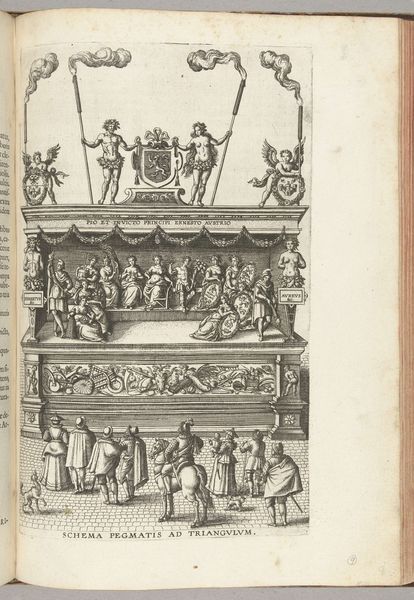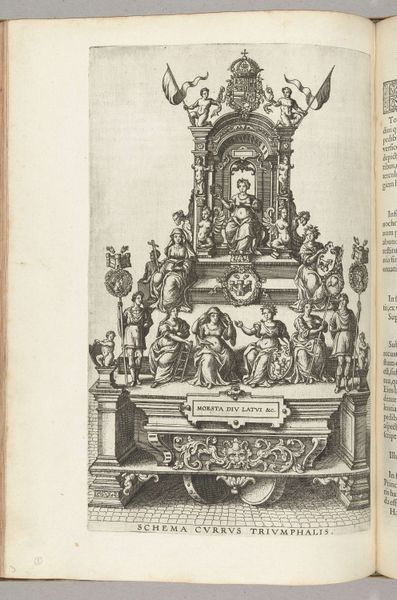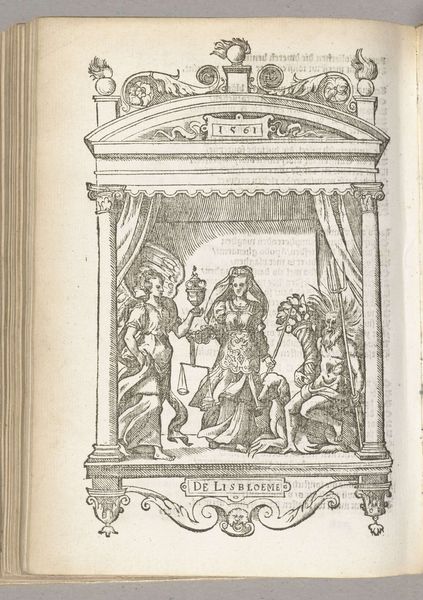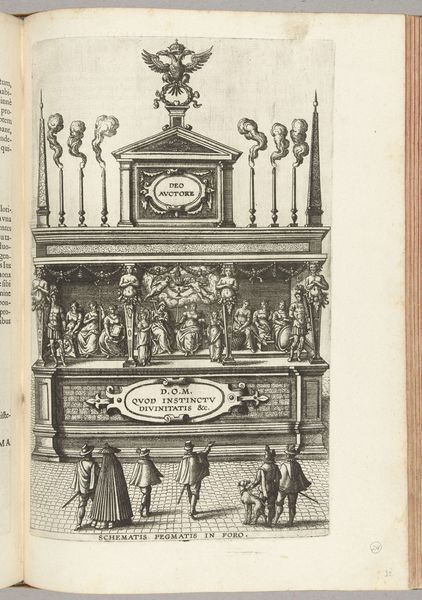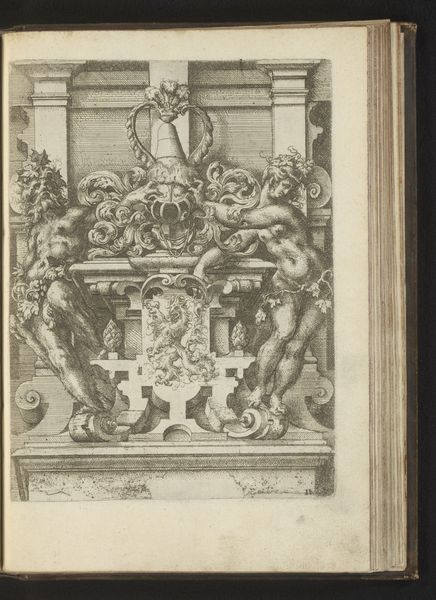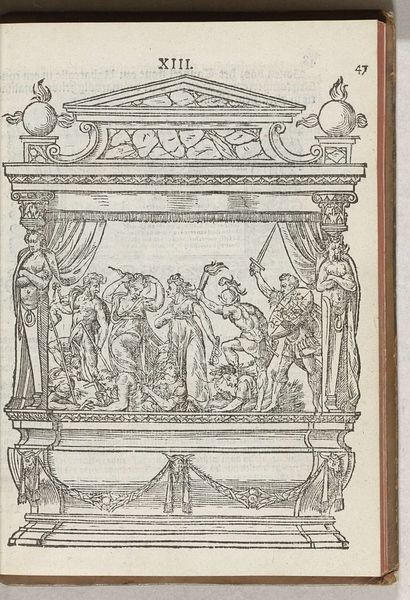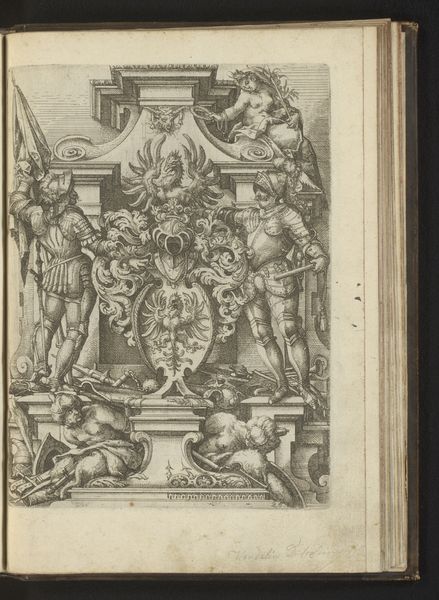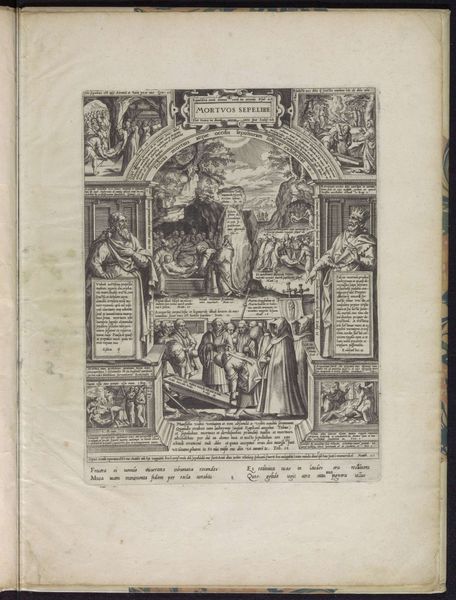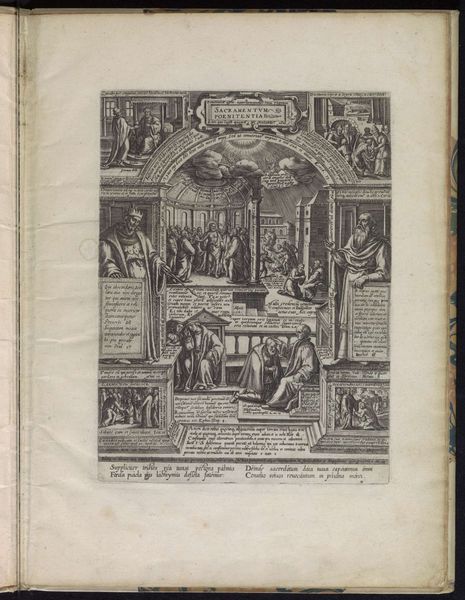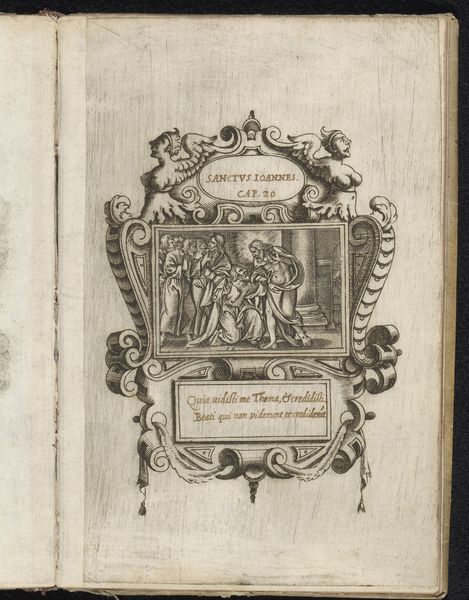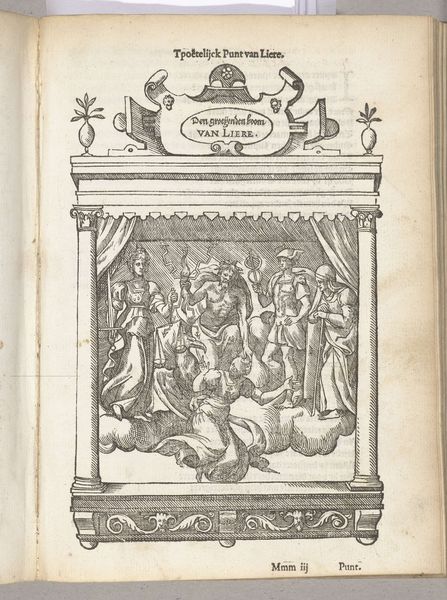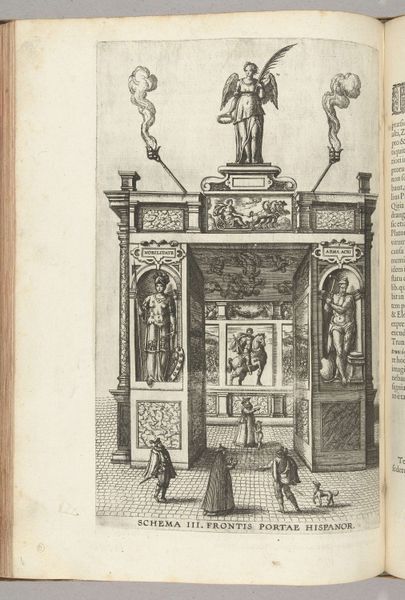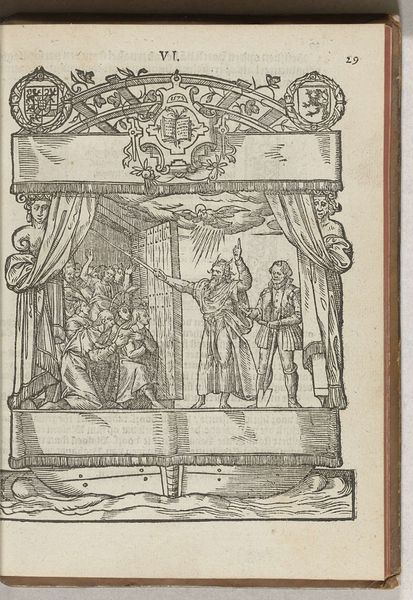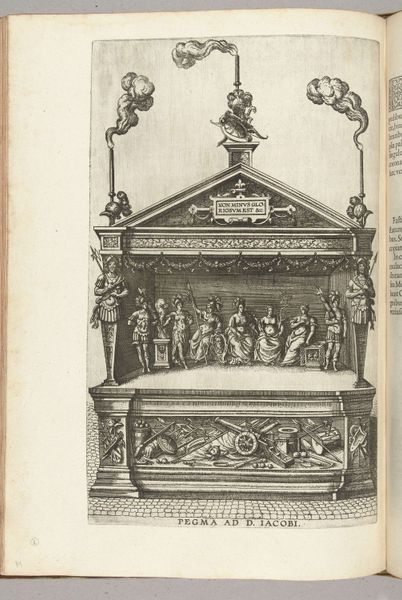
print, engraving
#
allegory
# print
#
landscape
#
mannerism
#
figuration
#
11_renaissance
#
coloured pencil
#
history-painting
#
engraving
Dimensions: height 326 mm, width 206 mm
Copyright: Rijks Museum: Open Domain
Curator: Pieter van der Borcht the Elder created this engraving, “Toneel met de bevrijding van de Schelde”, circa 1594, currently held at the Rijksmuseum. Editor: The level of detail packed into this black and white print is extraordinary; it gives the impression of meticulously carved stone, or perhaps even an elaborate cake decoration. It really pops against the background of the book. Curator: Indeed! It's important to consider this work was commissioned during a time of intense political upheaval. The liberation of the Scheldt river was a crucial victory for the Dutch Republic against Spanish rule, thus a monumental symbolic event. Editor: You can certainly sense that celebratory, propagandistic function, though the figures are rendered with such delicate lines. Knowing it’s an engraving sheds light on the intricate work done using tools on metal, like how a burin would achieve those sharp lines. Curator: Absolutely. This print served as a visual tool, disseminating the narrative of liberation throughout society. Prints like this, given their portability and reproducibility, were crucial in shaping public opinion and national identity. The integration of classicism, allegory, and symbolism underscores its intended sophisticated audience. Editor: And think of the paper itself! Where was it made? Who processed it? It’s easy to overlook, but paper in the 16th century was valuable; each sheet represents manual labour. That someone thought this political moment was worthy enough to be produced into prints suggests that there was more than symbolic significance involved. Curator: I agree; beyond purely pictorial representations, this is how ideologies were concretely distributed and reinforced through a culture of print, becoming accessible beyond elite circles. Consider how that access might have challenged the pre-existing power structures. Editor: Examining the material reality, we've exposed not just the aesthetic and political message, but the economic and social factors too; giving further consideration into where it stands within Renaissance printmaking. Curator: Reflecting upon the socio-political background really gives added nuance, helping us explore Van der Borcht's purpose. Editor: Absolutely, it’s fascinating how interrogating the means of production gives the symbolism much more depth.
Comments
No comments
Be the first to comment and join the conversation on the ultimate creative platform.
